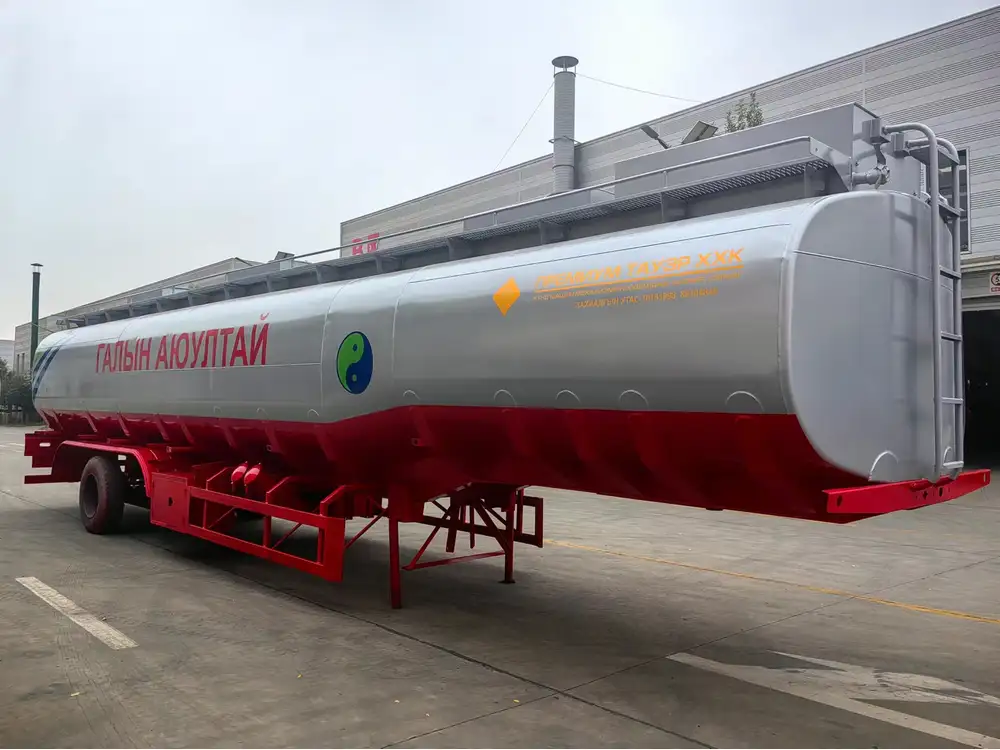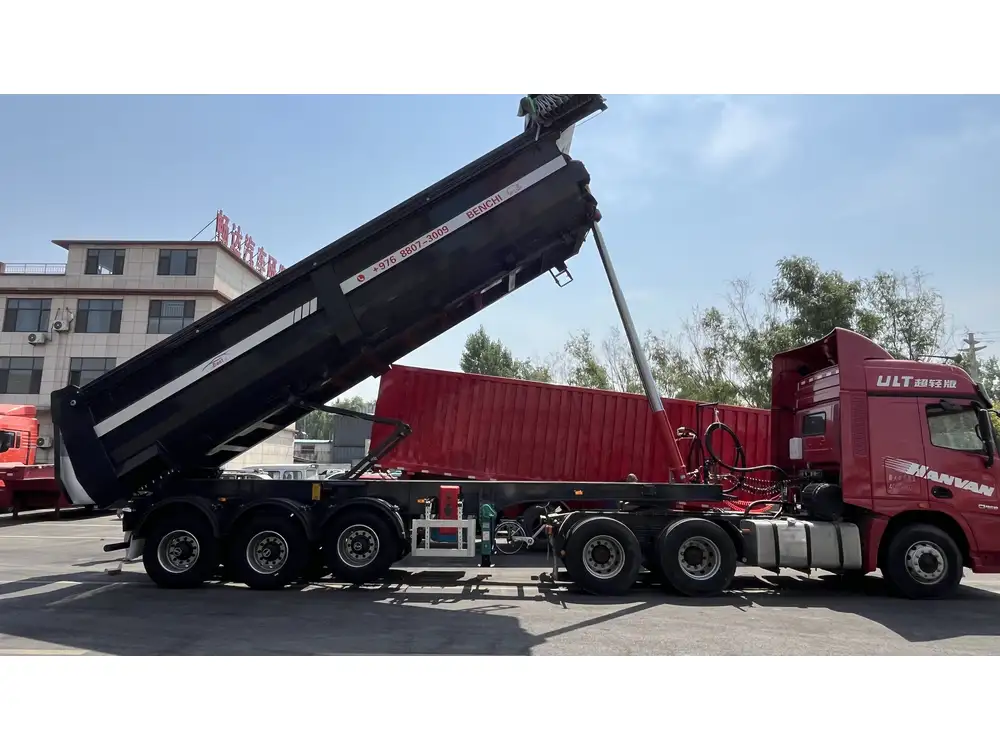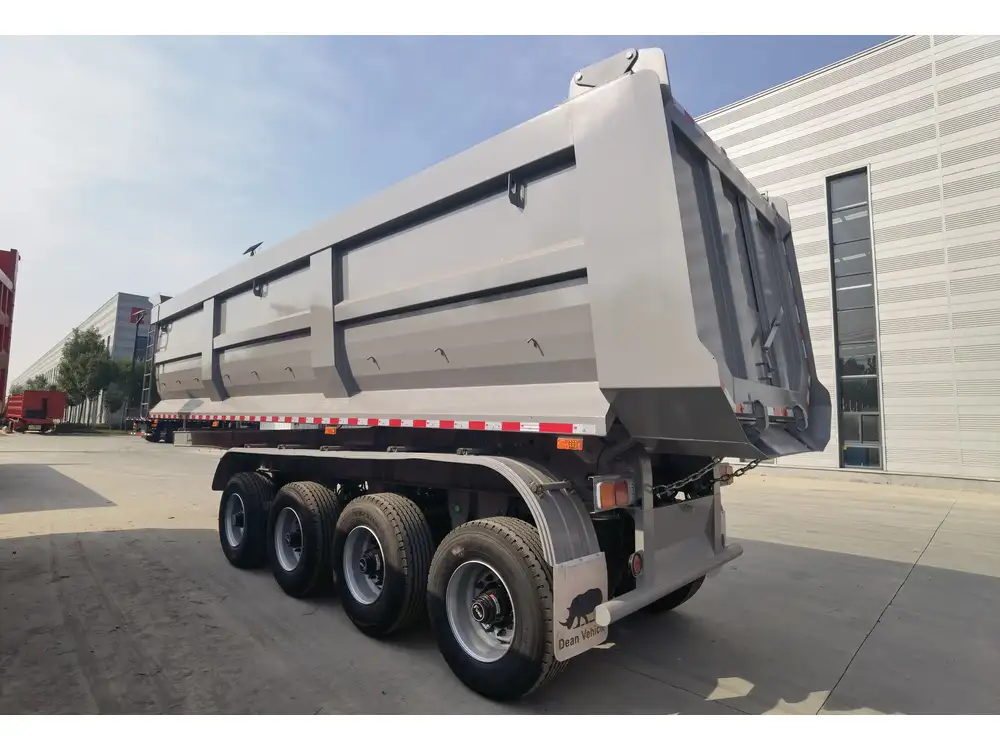Creating a homemade dump trailer is not just an exciting project but also a practical solution for various hauling needs, from landscaping to construction. Whether you’re a seasoned DIYer or a novice looking for your next big challenge, this guide will help you navigate through the intricacies of building a dump trailer from scratch. The following sections break down materials, tools, construction steps, and essential considerations to ensure your trailer is functional, durable, and safe.
Understanding the Basics of Dump Trailers
What is a Dump Trailer?
A dump trailer is a specialized vehicle designed for transporting loose materials such as gravel, sand, dirt, and debris. Unlike regular trailers, dump trailers have a hydraulic lift mechanism that allows the bed to tilt, making unloading a breeze. This feature is particularly beneficial for construction, landscaping, and seasonal clean-up projects.

Why Build a Homemade Dump Trailer?
Whether for personal projects or business purposes, the advantages of constructing your own dump trailer include:
- Cost Savings: Building a trailer can be significantly cheaper than purchasing one.
- Customization: Tailor the size and features to meet your specific needs.
- Quality Control: Using high-quality materials ensures durability.
- Satisfaction: Accomplishing a successful DIY project brings a sense of achievement.
Potential Uses for a Dump Trailer
- Landscaping: Transporting soil, mulch, or plants.
- Construction: Hauling building materials.
- Home Renovation: Removing debris from renovation sites.
- Recreational: Move equipment for recreational activities like dirt biking or camping.
Tools and Materials You Will Need

Tools Required
| Tool | Purpose |
|---|---|
| Welder | For joining metal parts together. |
| Angle Grinder | To cut and shape metal components. |
| Drill | For making holes and securing bolts. |
| Hydraulic Ram Kit | Creates the dump function for the trailer bed. |
| Wrench Set | Securing nuts and bolts. |
| Saw (Metal/Circular) | Cutting metal and wood as needed. |
| Level | Ensuring a flat base for construction. |
| Measuring Tape | To measure lengths and widths accurately. |
Materials Required
| Material | Quantity | Purpose |
|---|---|---|
| Steel Tubing | Varies | Main frame structure. |
| Trailer Axles | 2 | To support wheel assembly. |
| Dump Bed (Steel/Aluminum) | Varies | The dumping surface for materials. |
| Tires | 4 | For mobility and load-bearing. |
| Hydraulic Cylinder | 1 | To lift the bed for dumping. |
| Hitch Coupler | 1 | For connecting to the towing vehicle. |
| Wiring Harness | 1 | To power hydraulic systems. |
Step-by-Step Instructions for Building a Dump Trailer

Step 1: Design and Planning
Before diving into construction, sketch a design. Consider the following aspects:
- Dimensions: Decide on the trailer size according to your needs. Standard dimensions for dump trailers range from 6’x10’ to 8’x14’.
- Weight Capacity: Assess the load capacity, keeping in mind the towing capacity of your vehicle.
- Style: Choose a single or tandem axle, depending on stability requirements and turning radius.
Step 2: Frame Construction
- Cut Steel Tubing: Based on your design, use the angle grinder to cut steel tubing for the trailer frame.
- Weld Frame: Begin welding the frame together, ensuring all joints are secure and straight. Use clamps to hold pieces in place before welding.
- Add Cross Members: Install cross members for added strength. Space them evenly to distribute the weight effectively.
Step 3: Axle and Suspension Setup
- Install Axles: Position the axles at the appropriate distance from the trailer’s frame, typically towards the rear for better balance.
- Attach Suspension: Install suspension brackets on the frame to accommodate the axles. Use heavy-duty springs for better load handling.

Step 4: Construct the Dump Bed
- Measure and Cut Material: For the dump bed, cut your steel or aluminum sheets to the required dimensions.
- Form Walls: Weld the sides to the base of the bed, ensuring corners are rounded to prevent premature wear.
- Add Supports: Reinforce the bed with additional support beams to prevent bending under heavy loads.
Step 5: Hydraulic System Installation
- Install Hydraulic Cylinder: Position the hydraulic ram situated between the trailer bed and frame, ensuring it can lift the bed vertically.
- Connect Wiring: Follow the manufacturer’s instructions to connect the hydraulic system to a power source, usually the towing vehicle.
- Test the System: Before final assembly, conduct a test by raising and lowering the bed to check for leaks and functionality.
Step 6: Finish with Accessories
- Attach Hitch Coupler: Secure a compatible hitch coupler on the front of the frame to connect to your towing vehicle.
- Install Wheels and Tires: Attach the tires to the axles securely and check for proper alignment.
- Paint the Trailer: Apply a weather-resistant paint to prevent rust and extend lifespan.

Step 7: Safety Checks
- Inspect Construction: Ensure all bolts are tightened, and welds are intact.
- Test Load Capacity: Gradually test the trailer with increasing loads to confirm structural integrity before regular use.
- Ensure Legal Compliance: Check local regulations regarding trailer dimensions and load limits.
Maintenance Tips for Your Homemade Dump Trailer
A homemade trailer requires regular maintenance to ensure safety and functionality. Here’s what to keep in mind:
- Visual Inspections: Regularly check for signs of wear, such as rust or cracks in the frame.
- Wheel Maintenance: Inspect tires for proper inflation and tread wear. Replace as necessary.
- Hydraulic System Checks: Periodically inspect hydraulic connections and fluid levels to prevent leaks.
- Cleaning: Remove debris and wash the trailer after use to maintain its appearance and functional surfaces.
Frequently Asked Questions
Can I use a trailer from old equipment for this project? Yes, repurposing an older trailer can help save costs and provide a solid base.
What is the average cost of building a dump trailer? The cost varies depending on materials used, averaging between $1,500 and $4,000.
Is it difficult to operate a dump trailer? Operating a dump trailer is generally straightforward. Follow proper safety protocols when loading and unloading.
Should I worry about weight restrictions for my towing vehicle? Definitely, verify your vehicle’s towing capacity to ensure safety and compliance with regulations.

Conclusion
Building a homemade dump trailer can be an enriching project that pays dividends in utility and functionality. By following the steps detailed above and paying close attention to the materials used, you can create a durable and effective hauling solution tailored to your needs. As you embark on this construction journey, prioritize safety, precision, and creativity, which will lead you to a successful finished product that can serve you for years to come.



